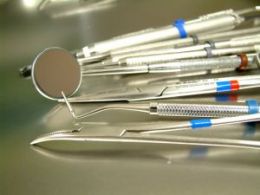Ultrasonic Cleaners
How to Choose a Strain Gauge Load Monitor
Load monitoring devices, also called load cell sensors or tension monitors, measure the force exerted by the load on equipment, structural members or other components subjected to the load. Electronic load and tension monitoring devices find application across a broad spectrum of industry. One example is on construction cranes to assure the load – such as I-beams or fresh-mixed concrete – does not exceed the capacity of the crane. Another application is measuring the strain on wires strung between pylons or insuring that structural components on aircraft are balanced and safe to fly.
Load cells such as the Straightpoint Loadlink and Radiolink equipment available from Tovatech can also be used as crane scales and thus are employed for tension monitoring and weighing.
How a Strain Gauge Load Monitor Works
Using the Straightpoint load and tension monitor and a building crane as the application, the device is positioned between two lifting … Read the rest
Ultrasonic Cleaning Delicate Surgical Instruments
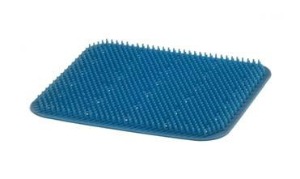
Ultrasonic cavitation is a proven technique for removing contaminants from surgical instruments prior to disinfecting or sterilizing steps. This is accomplished in an ultrasonic cleaner when microscopic bubbles created by the unit’s ultrasonic transducers implode on contact with surgical tools. The process effectively strips away blood, tissue and other deposits resulting from surgical procedures.
Balancing Ultrasonic Cleaner Frequency with Cleaning Effectiveness
Higher frequency ultrasonic cleaners operating at 80 to 130 kHz are often used for delicate or highly polished parts in order to avoid potential damage caused by the imploding bubbles. Higher frequencies equate to smaller bubbles, which while safe for delicate parts are less effective in removing gross contaminants associated with microsurgery instruments. Instead, an ultrasonic cleaner operating at 37 kHz such as the Elmasonic Select series available from Tovatech is generally recommended for surgical instrument cleaning.
There are, however, instances … Read the rest
Residual Contaminant Analysis with Ultrasound
For residual contaminant analysis particles must be removed from the test item before the actual analysis is carried out. Ultrasound with its predefined parameters is a suitable and cost-saving method for this. After removal solid contaminants can be filtered and analyzed. Soluble contaminants are concentrated by evaporation then analyzed.
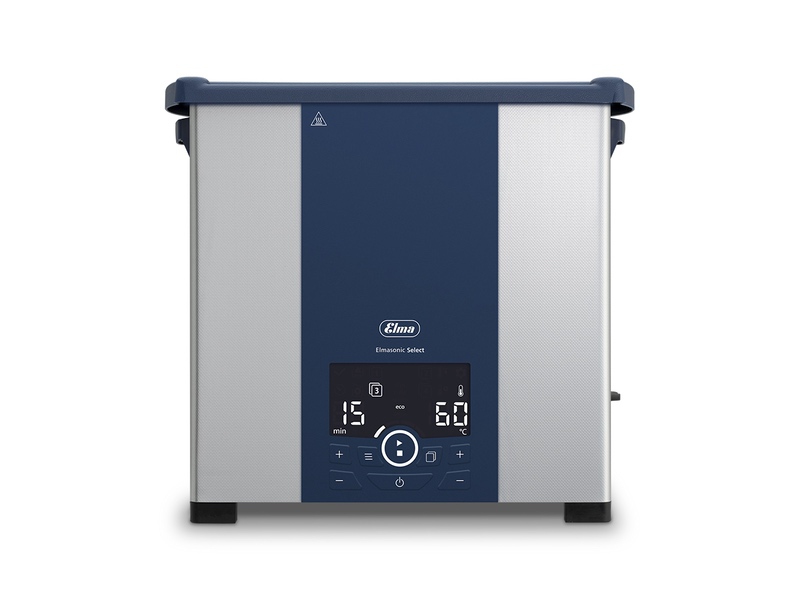
The right ultrasonic equipment coupled with thought-through accessories is crucial for a successful analysis. The Elmasonic Select 120 ultrasonic cleaner available from Tovatech, along with sample suspension devices, provide an ideal method for residual contaminant analysis.
Several methods are available to protect products from recontamination. For example, parts being analyzed can be placed in glass beakers or test tubes containing a suitable solution. These are suspended in the ultrasonic cleaner solution. Ultrasound transmitted from liquid in the tank to the solution in the container acts on and removes the residual contaminants for subsequent analysis.
Contact the scientists at Tovatech … Read the rest
How to Improve Ultrasonic Cleaner Performance
Ultrasonic cavitation is a proven cleaning technique used throughout industry to quickly and safely remove grit, grime, grease, and other contaminants on products ranging from delicate laboratory glassware and surgical instruments to steel and iron castings and forgings. Performed in an ultrasonic cleaner such as the Elmasonic series available from Tovatech, cavitation occurs in a cleaning solution when generator-powered ultrasonic transducers create billions of minute bubbles that implode with tremendous force upon contact with objects being cleaned.
While there are many ways you can improve ultrasonic cleaning performance here are some examples.
A. Ultrasonic Frequency
The frequency of ultrasonic cleaning is measured in kilohertz and generally ranges upwards from 25,000 (25 kHz) cycles per second. Low frequencies create relatively large cavitation bubbles and more vigorous cleaning action. As frequencies increase to 37, 40, 45, 130 kHz and higher, cavitation bubbles become smaller, cleaning action gentler and the ability to penetrate … Read the rest
ICP-OES Spray Chamber Maintenance with an Ultrasonic Cleaner
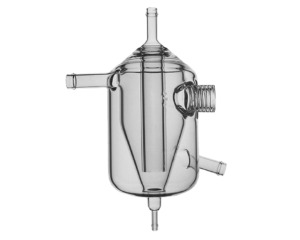
Inductively Coupled Plasma Optical Emission Spectrometers are costly and require regular maintenance to assure accurate performance. An ultrasonic cleaner is recommended for ICP-OES spray chambers and we share here two approaches, one employed by a user and the other recommended by a distributor. Labs using this equipment should above all follow the recommendations of their supplier but can look to Tovatech for ultrasonic cleaning equipment that meets these recommendations.
Ultrasonic Cleaning ICP-OES Spray Chambers
An ultrasonic cleaner is recommended because spray chambers have complex shapes making it difficult to remove contaminants that deposit during ICP-OES operation. Cleaning is provided by cavitation action, or the implosion of minute bubbles in an ultrasonic cleaning solution, on all chamber surfaces while immersed in the solution. This action is produced by generator-powered ultrasonic transducers bonded to the bottom of a stainless steel tank. It quickly and safely blasts away … Read the rest
How to Safely Clean with Acid in an Ultrasonic Cleaner
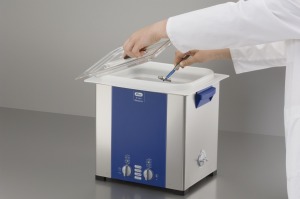
There is a wide variety of ultrasonic cleaning solutions on the market – each formulated for specific cleaning operations in an ultrasonic cleaner. These solutions are generally classified as alkaline (high pH), neutral, or acidic (low pH). Most acidic ultrasonic cleaning solution concentrates are biodegradable and when diluted according to instructions can be used in stainless steel ultrasonic cleaning tanks such as the Elmasonic series available from Tovatech.
Protecting Staff and Ultrasonic Cleaner Tanks from Highly Acidic Baths
There are exceptions, and an important one is if you must use corrosive low pH solutions such as nitric, sulfuric, formic, or hydrofluoric acid in an ultrasonic cleaner. Without proper protection these solutions can wreak havoc on your ultrasonic cleaner and the investment it represents.
Solving this problem is twofold and while relatively simple requires a procedure that must be part of … Read the rest
Using an Ultrasonic Cleaner in the Home
Mention an ultrasonic cleaner to the cognoscenti and chances are they’ll think in terms of cleaning engine parts, medical instruments or other industrial applications for this highly efficient way of removing dirt, grease and other contaminants from all types of surfaces.
But ultrasonic cavitation action – the implosion of countless minute bubbles that quickly and safely strip away these contaminants – is also finding increasing application in the home. The action penetrates cracks and crevices unreachable by hand scrubbing and accomplishes the cleaning process in minutes. Residential uses for ultrasonic cleaners include
- Jewelry
- Eyeglasses
- Dentures
- Manicure and pedicure equipment
- Razors, combs and brushes
- Flatware
- Small tools
- Certain minerals
- Coinage
and other small products that can be safely wetted in an ultrasonic cleaning solution.
UCLA School of Dentistry Recommends Ultrasonic Cleaning
Ultrasonic cleaners are found with great regularity in dental healthcare. In the UCLA School of Dentistry website there is a chapter on sterilization in the Infection Control Manual. The chapter provides an excellent description on the workflow and processes involved. Dental Treatment Facilities (DTFs) must have a Central Sterilization Room (CSR). In the physical design of the facility, using instrument cassettes and ultrasonic cleaning aids in processing efficiency. In the sterilization process, various steps are given. For instrument cleaning, ultrasonic cleaning is the recommended option. The cleaning solution must be able to remove protein, blood and other debris. The solution must be changed regularly or whenever visibly soiled.
For further information visit www.dentistry.ucla.edu.… Read the rest
How Basket Design Impacts Ultrasonic Cleaner Efficiency
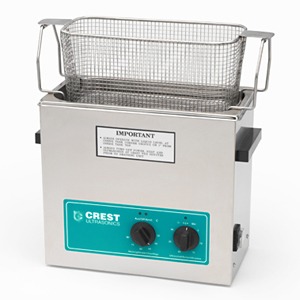
Baskets and trays used to support products in an ultrasonic cleaner solution have an effect on ultrasonic cleaning efficiency. Ultrasonic cleaner baskets and trays are necessary to keep the products being cleaned from coming in contact with the tank bottom and walls. The design of the ultrasonic cleaner basket or tray should have minimum impact on the level of ultrasonic cavitation. This is because anything placed in an ultrasonic cleaner bath, including the baskets, affects cavitation action by absorbing ultrasonic energy. The goal is selecting a basket or tray design that helps maximize cavitation action on parts being cleaned.
Comparing Basket Design
The October 2005 issue of Managing Infection Control reported on a study of four basket designs and how the design impacted ultrasonic cleaner efficiency. While there are several tests to evaluate the efficiency of an ultrasonic cleaner, including the aluminum … Read the rest
Using an Ultrasonic Cleaner in the Animal Hospital
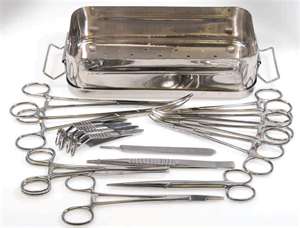
Veterinary surgeons in animal hospitals and veterinary clinics will quickly see the benefits of using an ultrasonic cleaner to thoroughly remove blood and tissue from veterinary equipment such as knives, probes, curettes, trimmers and pipettes. The ultrasonic cleaning process is fast and much safer than hand scrubbing surgical instruments because it reduces the potential risk of staff injury and damage to sharp edges.
How it Works
An ultrasonic cleaner operates on the principal of cavitation – the action of billions of minute bubbles imploding on the surface of objects immersed in the ultrasonic cleaning solution. These bubbles are created by generator-powered ultrasonic transducers mounted on the cleaner’s tank and can reach the tiniest cracks, crevices and blind holes in the instruments to blast away contaminants without damaging delicate surfaces.… Read the rest
